Brother Innov-is M230E, Innov-is M240ED Operation Manual
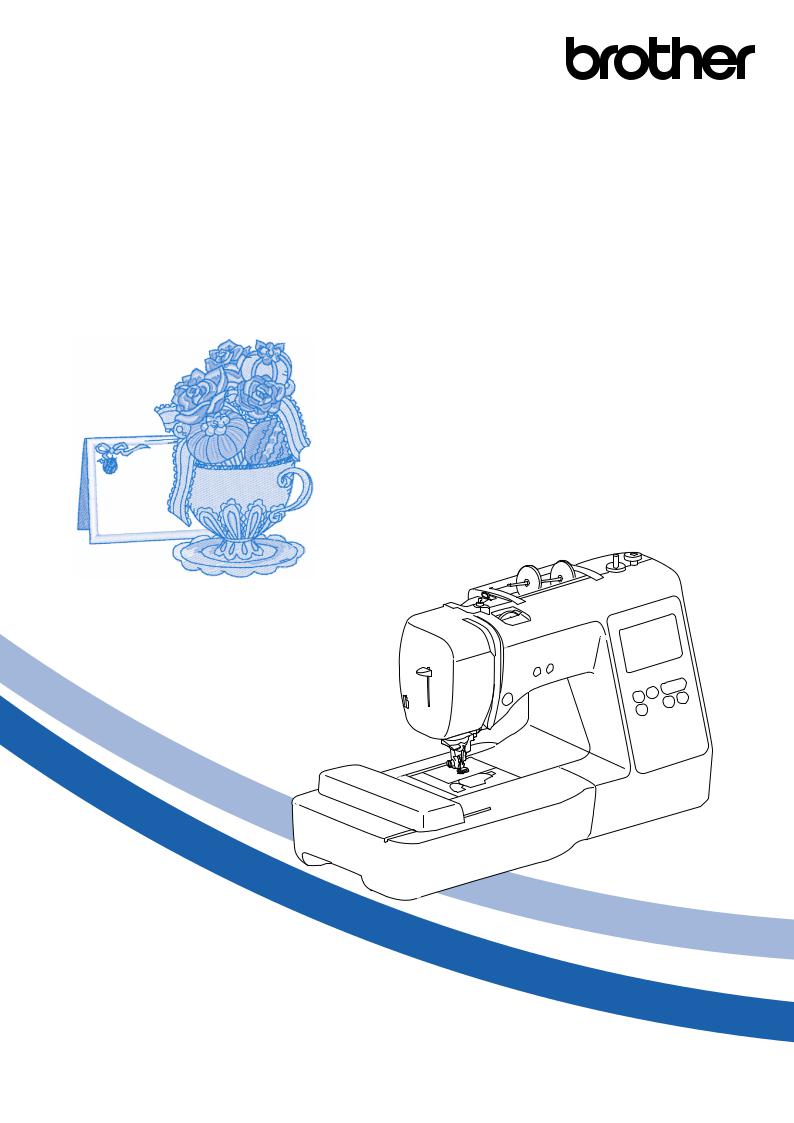
Operation Manual
Embroidery Machine
Product Code: 888-M30/M31
Be sure to read this document before using the machine.
We recommend that you keep this document nearby for future reference.
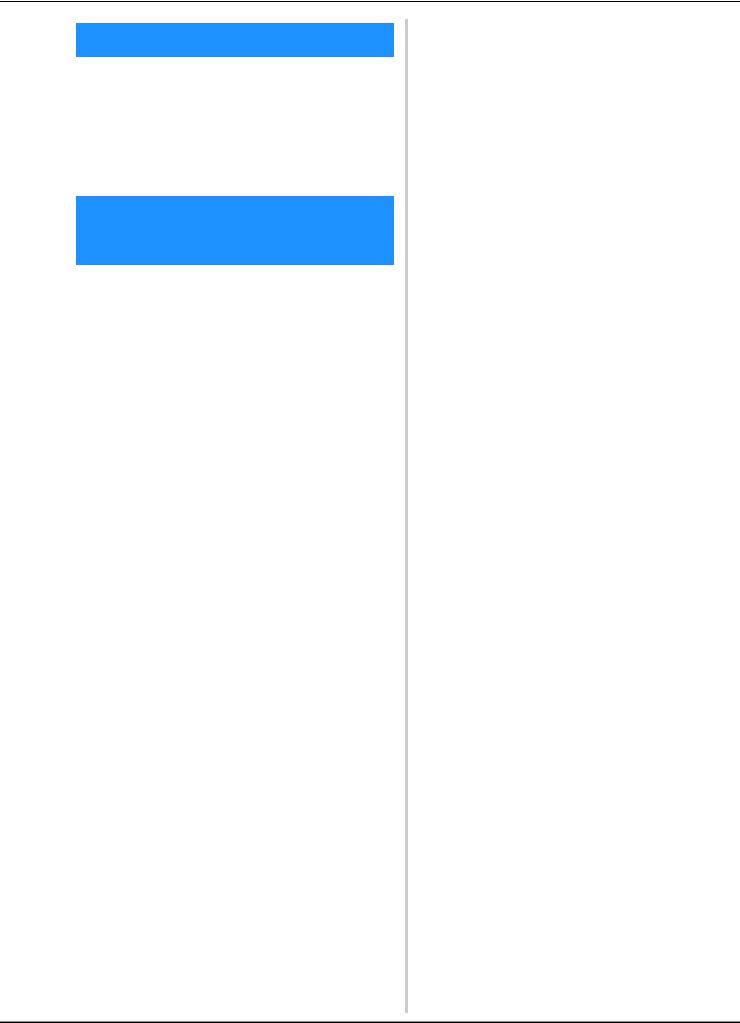
INTRODUCTION
Thank you for purchasing this machine. Before using this machine, carefully read the “IMPORTANT SAFETY INSTRUCTIONS”, and then study this manual for the correct operation of the various functions.
In addition, after you have finished reading this manual, store it where it can quickly be accessed for future reference.
IMPORTANT SAFETY INSTRUCTIONS
Please read these safety instructions before attempting to use the machine.
 DANGER
DANGER
- To reduce the risk of electrical shock
1Always unplug the machine from the electrical
outlet immediately after using, when cleaning, making any user servicing adjustments mentioned in this manual, or if you are leaving the machine unattended.
 WARNING
WARNING
- To reduce the risk of burns, fire, electrical shock, or injury to persons.
2Always unplug the machine from the electrical
outlet when making any adjustments mentioned in the instruction manual.
•To unplug the machine, switch the machine to the symbol “O” position to turn it off, then grasp the plug and pull it out of the electrical outlet. Do not pull on the cord.
•Plug the machine directly into the electrical outlet. Do not use an extension cord.
•Always unplug your machine if there is a power failure.
3Electrical Hazards:
•This machine should be connected to an AC power source within the range indicated on the rating label. Do not connect it to a DC power source or converter. If you are not sure what kind of power source you have, contact a qualified electrician.
•This machine is approved for use in the country of purchase only.
4Never operate this machine if it has a damaged cord
or plug, if it is not working properly, has been dropped or damaged, or water is spilled on the unit. Return the machine to the nearest authorized Brother dealer for examination, repair, electrical or mechanical adjustment.
•While the machine is stored or in use if you notice anything unusual, such as an odor, heat, discoloration or deformation, stop using the machine immediately and unplug the power cord.
•When transporting the machine, be sure to carry it by its handle. Lifting the machine by any other part may damage the machine or result in the machine falling, which could cause injuries.
•When lifting the machine, be careful not to make any sudden or careless movements, which may cause a personal injury.
5Always keep your work area clear:
•Never operate the machine with any air openings blocked. Keep ventilation openings of the machine and foot control free from the build up of lint, dust, and loose cloth.
•Never drop or insert foreign objects in any opening.
•Do not operate where aerosol (spray) products are being used or where oxygen is being administered.
•Do not use the machine near a heat source, such as a stove or iron; otherwise, the machine, power cord or garment being embroidered may ignite, resulting in fire or an electric shock.
•Do not place this machine on an unstable surface, such as an unsteady or slanted table, otherwise the machine may fall, resulting in injuries.
6Special care is required when embroidering:
•Always pay close attention to the needle. Do not use bent or damaged needles.
•Keep fingers away from all moving parts. Special care is required around the machine needle.
•Switch the machine to the symbol “O” position to turn it off when making any adjustments in the needle area.
•Do not use a damaged or incorrect needle plate, as it could cause the needle to break.
7This machine is not a toy:
•Your close attention is necessary when the machine is used by or near children.
1

•The plastic bag that this machine was supplied in should be kept out of the reach of children or disposed of. Never allow children to play with the bag due to the danger of suffocation.
•Do not use outdoors.
8For a longer service life:
•When storing this machine, avoid direct sunlight and high humidity locations. Do not use or store the machine near a space heater, iron, halogen lamp, or other hot objects.
•Use only neutral soaps or detergents to clean the case. Benzene, thinner, and scouring powders can damage the case and machine, and should never be used.
•Always consult the Operation Manual when replacing or installing any assemblies, the presser feet, needle or other parts to assure correct installation.
9For repair or adjustment:
•If the light unit is damaged, it must be replaced by an authorized Brother dealer.
•In the event a malfunction occurs or adjustment is required, first follow the troubleshooting table in the back of the Operation Manual to inspect and adjust the machine yourself. If the problem persists, please consult your local authorized Brother dealer.
Use this machine only for its intended use as described in the manual.
Use accessories recommended by the manufacturer as contained in this manual.
The contents of this manual and specifications of this product are subject to change without notice.
For additional product information and updates, visit our website at www.brother.com
SAVE THESE
INSTRUCTIONS
This machine is intended for household use.
FOR USERS IN COUNTRIES EXCEPT CENELEC COUNTRIES
This appliance is not intended for use by persons (including children) with reduced physical, sensory or mental capabilities, or lack of experience and knowledge, unless they have been given supervision or instruction concerning use of the appliance by a person responsible for their safety. Children should be supervised to ensure that they do not play with the appliance.
FOR USERS IN CENELEC COUNTRIES
This appliance can be used by children aged from 8 years and above and persons with reduced physical, sensory or mental capabilities or lack of experience and knowledge if they have been given supervision or instruction concerning use of the appliance in a safe way and understand the hazards involved. Children shall not play with the appliance. Cleaning and user maintenance shall not be made by children without supervision.
2
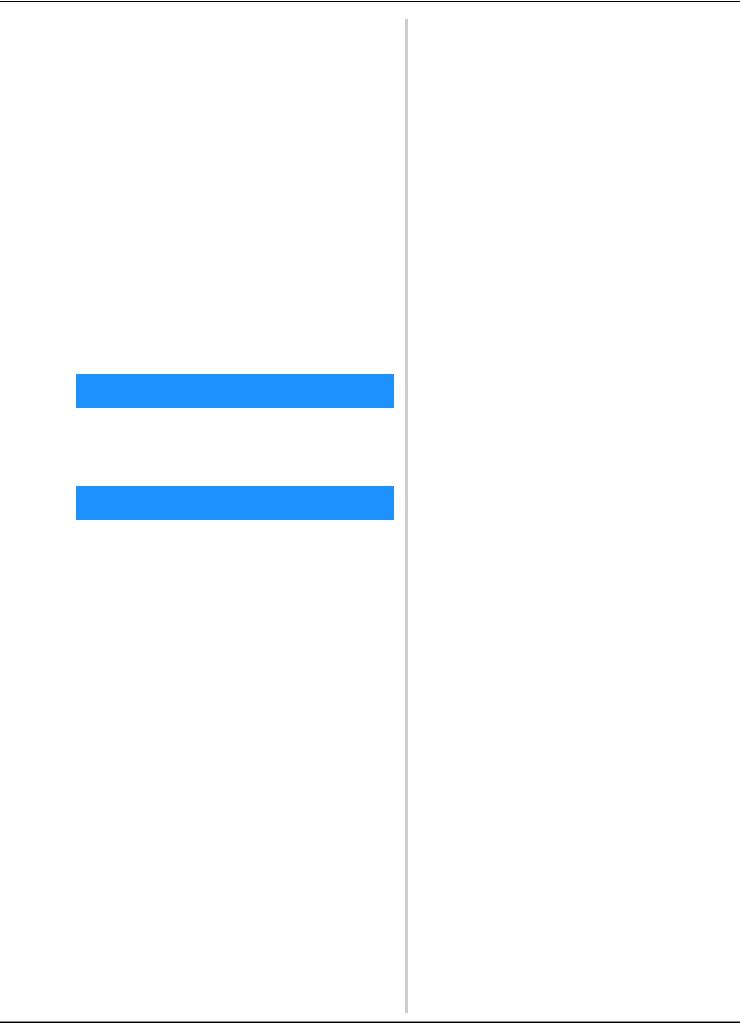
FOR USERS IN THE UK,
EIRE, MALTA
AND CYPRUS ONLY IMPORTANT
•In the event of replacing the plug fuse, use a fuse
approved by ASTA to BS 1362, i.e. carrying the  mark, rating as marked on plug.
mark, rating as marked on plug.
•Always replace the fuse cover. Never use plugs with the fuse cover omitted.
•If the available electrical outlet is not suitable for the plug supplied with this equipment, you should contact your authorized Brother dealer to obtain the correct lead.
Trademarks
App Store is a service mark of Apple Inc.
Android and Google Play are trademarks of Google, Inc. Use of these trademarks are subject to Google Permissions.
Open Source Licensing Remarks
This product includes open-source software.
To see the open source licensing remarks, please go to the manual download section on your model's home page of Brother Solutions Center at “ http://s.brother/cpjae ”.
3
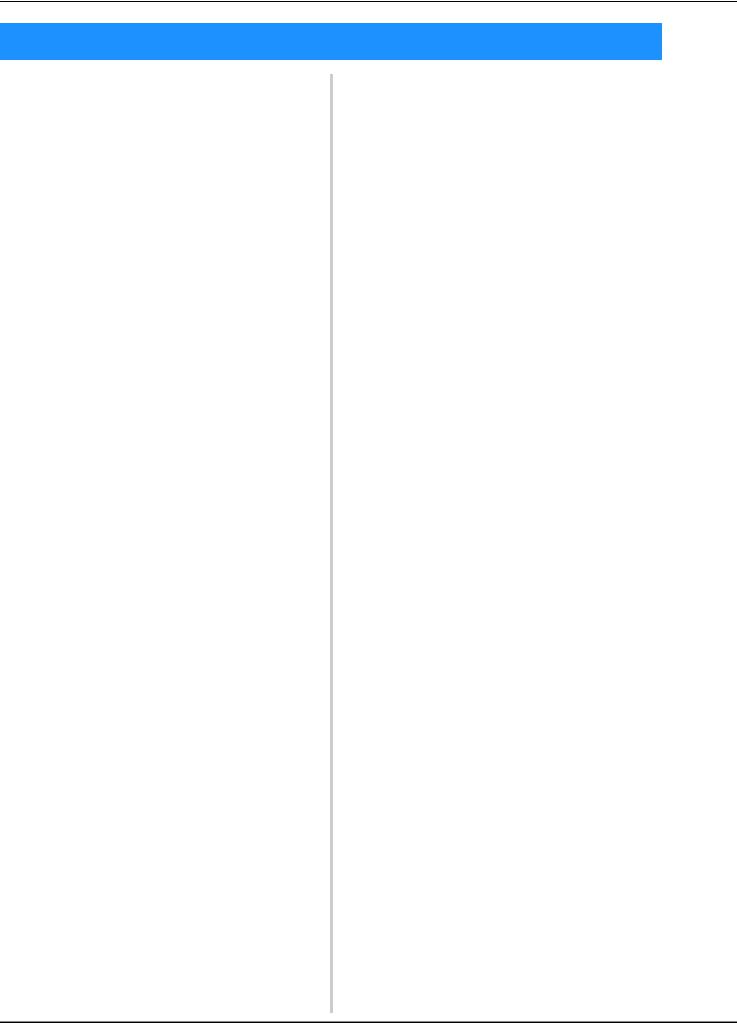
CONTENTS
CONTENTS |
|
Chapter 1 GETTING READY |
5 |
Names of Machine Parts....................................... |
5 |
Included accessories .............................................................. |
7 |
Optional accessories .............................................................. |
8 |
Turning the Machine On/Off................................ |
9 |
LCD Operation ................................................... |
10 |
Settings screen...................................................................... |
10 |
Adjusting input sensitivity for operation keys........................ |
11 |
Winding/Installing the Bobbin............................ |
11 |
Winding the bobbin ............................................................. |
11 |
Installing the bobbin............................................................. |
13 |
Upper Threading ................................................ |
15 |
Threading the upper thread .................................................. |
15 |
Replacing the Needle.......................................... |
18 |
Checking the needle............................................................. |
18 |
Replacing the needle............................................................ |
18 |
Chapter 2 EMBROIDERY |
19 |
Embroidering Preparation................................... |
19 |
Attaching the Embroidery Unit ............................................. |
19 |
Embroidery Attractive Finishes ............................................. |
20 |
Hooping the fabric in the embroidery frame......................... |
21 |
Attaching the Embroidery Frame .......................................... |
23 |
Embroidering ...................................................... |
24 |
Selecting an embroidery pattern ........................................... |
24 |
Embroidering a pattern ......................................................... |
27 |
Adjusting thread tension....................................................... |
29 |
Embroidering the appliqué patterns ...................................... |
29 |
Using a frame pattern to make an appliqué .......................... |
30 |
Split embroidery patterns...................................................... |
31 |
Editing Patterns................................................... |
32 |
Editing All Patterns ............................................. |
34 |
Aligning the pattern and the needle position ........................ |
34 |
Embroidering linked characters ............................................ |
35 |
Using the Memory Function ............................... |
36 |
Saving embroidery patterns .................................................. |
36 |
Retrieving embroidery patterns............................................. |
37 |
Chapter 3 APPENDIX |
39 |
Care and Maintenance........................................ |
39 |
Restrictions on oiling............................................................ |
39 |
Precautions on storing the machine...................................... |
39 |
Cleaning the race ................................................................. |
39 |
Touch panel is malfunctioning ............................................. |
40 |
Adjusting the bobbin thread tension ..................................... |
40 |
Replacing the Embroidery Foot .................................................. |
41 |
If the thread becomes tangled under the bobbin winder |
|
seat ...................................................................................... |
42 |
Troubleshooting.................................................. |
43 |
List of symptoms................................................................... |
43 |
Error messages...................................................................... |
46 |
Operation beeps................................................................... |
48 |
Upgrading your machine’s software ................... |
48 |
Index .................................................................. |
49 |
4
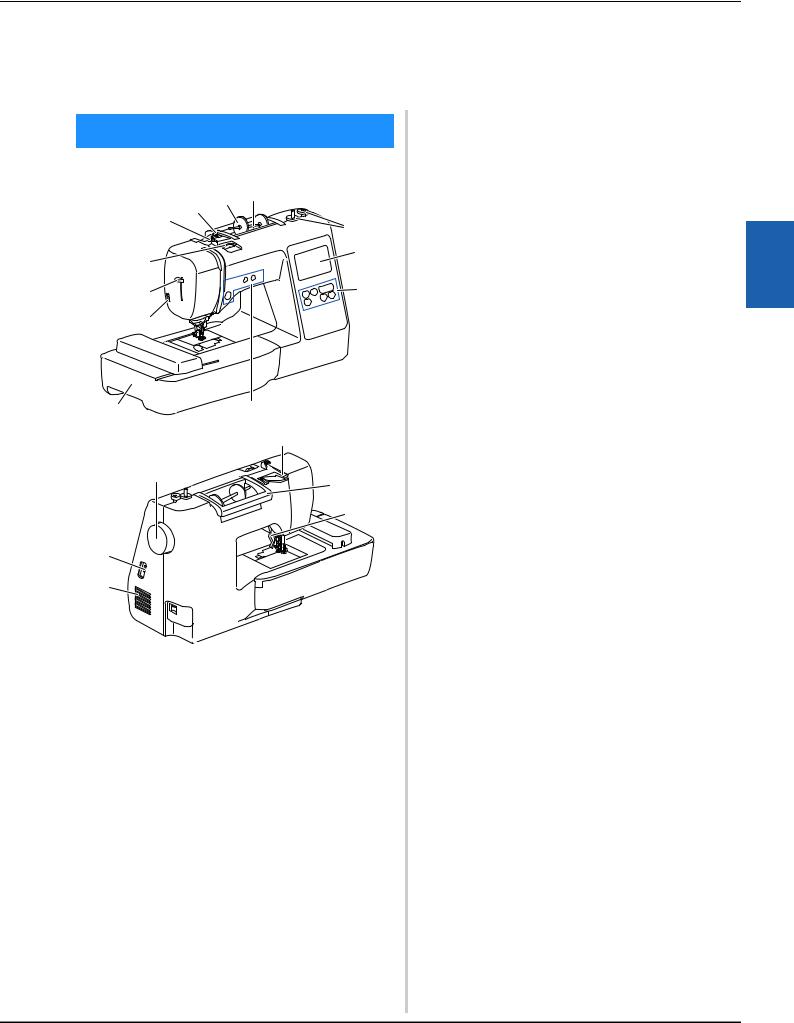
Names of Machine Parts
Chapter 1 GETTING READY
Names of Machine Parts
■ Main parts
|
|
c |
d |
|
b |
|
|
|
|
|
|
a |
|
|
e |
|
|
|
l |
f |
|
|
k |
g |
|
|
j |
|
i h
n
m
o
p
t
s
 q r
q r
1Bobbin winding thread guide and pretension disk (page 13)
2 Thread guide (page 12)
3 Spool cap (page 11)
4 Spool pin (page 11)
5 Bobbin winder (page 11)
6 LCD (liquid crystal display) (page 10)
7 Operation panel (page 6)
8 Operation buttons (page 6)
9 Embroidery unit (page 19)
0 Thread cutter (page 16)
A Needle threader lever (page 17) B Thread tension dial (page 29)
CHandwheel
Turn the handwheel toward you (counterclockwise) to raise and lower the needle to embroider one stitch.
D Thread guide cover (page 12)
EHandle
Carry the machine by its handle when transporting.
FPresser foot lever
Raise and lower the presser foot lever to raise and lower the presser foot.
G Main power switch (page 9)
H Power supply jack (page 9)
IAir vent
The air vent allows the air surrounding the motor to circulate. Do not cover the air vent while the machine is being used.
J USB port (for a USB flash drive) (page 36)
1
READY GETTING
5
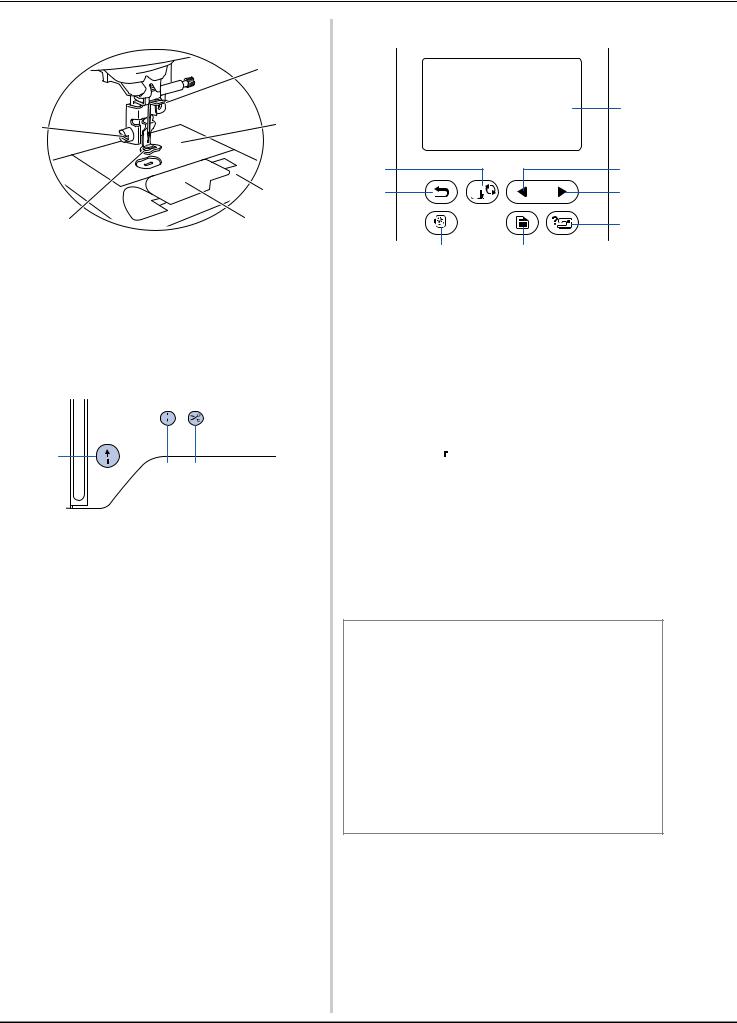
Names of Machine Parts
■ Needle and presser foot section
|
a |
f |
b |
|
c
|
e |
d |
|
|
|
1 |
Needle bar thread guide (page 16) |
|
2 |
Needle plate |
|
3 |
Needle plate cover (page 14) |
|
4 |
Bobbin cover/bobbin case (page 14, 39) |
|
5Embroidery foot
The embroidery foot helps control fabric flexibility for better stitch consistency.
6 Embroidery foot screw (page 41)
■ Operation buttons
a
b c
1“Start/Stop” button 
Press the “Start/Stop” button to start or stop embroidering. The button changes color according to the machine’s operation mode.
Green: |
The machine is ready to embroider or is |
|
embroidering. |
Red: |
The machine cannot embroider. |
Orange: |
The machine is winding the bobbin thread, or |
|
the bobbin winder shaft is moved to the right |
|
side. |
2Needle position button 
Press the needle position button to raise or lower the needle. Pressing the button twice embroiders one stitch.
3Thread cutter button 
Press the thread cutter button after embroidering is stopped to cut both the upper and the bobbin threads.
■ Operation panel and operation keys
|
a |
h |
b |
g |
c |
|
d |
f |
e |
1LCD (liquid crystal display) (touch panel)
Selected pattern settings and messages are displayed. Touch the keys displayed on the LCD to perform operations. For details, refer to “LCD Operation” on page 10.
2Previous page key 
Displays the previous screen when there are items that are not displayed on the LCD.
3Next page key 
Displays the next screen when there are items that are not displayed on the LCD.
4Help key 
Press to get help on using the machine.
5Settings key 
Press to set the needle stop position, the buzzer sound, and more.
6Embroidery key 
Press to display the pattern type selection screen.
7Back key 
Press to return to the previous screen.
8Presser foot/Needle exchange key 
Press this key before changing the needle, the presser foot, etc. This key locks all key and button functions to prevent operation of the machine.
 Note
Note
•The operation keys of this machine are capacitive touch sensors. Operate the keys by directly touching them with your finger.
The response of the keys varies according to the user. The pressure exerted on the keys does not affect the response of the keys.
•Since the operation keys react differently depending on the user, adjust the setting for “Adjusting input sensitivity for operation keys” on page 11.
•When using an electrostatic touch pen, make sure that its point is 8 mm or more. Do not use a touch pen with a thin point or a unique shape.
6
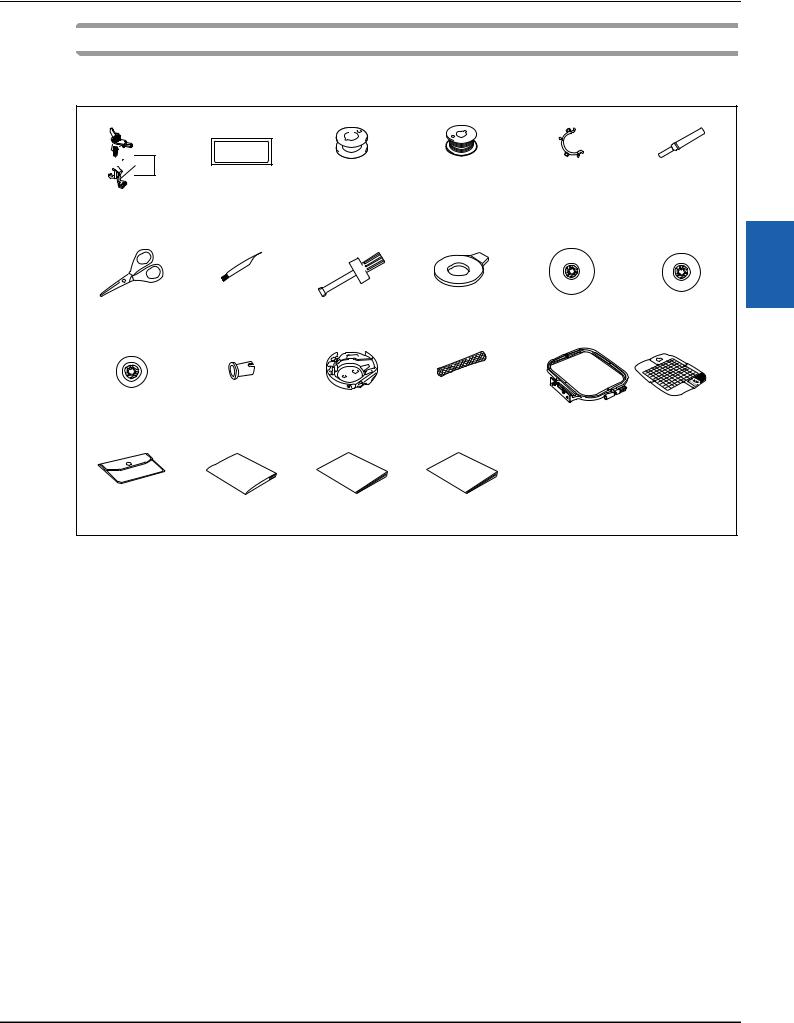
Names of Machine Parts
Included accessories
Included accessories may differ from the table below depending on the machine model you purchased. For more details on included accessories and their part codes of your machine, refer to the additional sheet “Included Accessories”.
1. 2. 3. 4. 5. 6.


 Q
Q
Embroidery foot “Q” |
Needle set *1 |
Bobbin |
Pre-wound bobbin (90 weight |
Bobbin clip |
Seam ripper |
(on machine) |
|
|
white embroidery bobbin |
|
|
|
|
|
thread) |
|
|
7. |
8. |
9. |
10. |
11. |
12. |
Scissors |
Cleaning brush |
Screwdriver |
Disc-shaped screwdriver |
Spool cap (large) |
Spool cap (medium) |
|
|
|
|
|
(on machine) |
13. |
14. |
15. |
16. |
17. |
|
Spool cap (small) |
Thread spool insert |
Bobbin case |
Spool net |
Embroidery frame set (medium) |
|
(mini king thread spool) |
(on machine) |
|
10 cm (H) × 10 cm (W) (4 inches (H) × 4 inches (W)) |
18. |
19. |
20. |
21. |
|
Accessory bag |
Operation Manual |
Quick Reference Guide |
Embroidery Design Guide |
*1 75/11 3 needles, 90/14 1 needle
1
READY GETTING
7
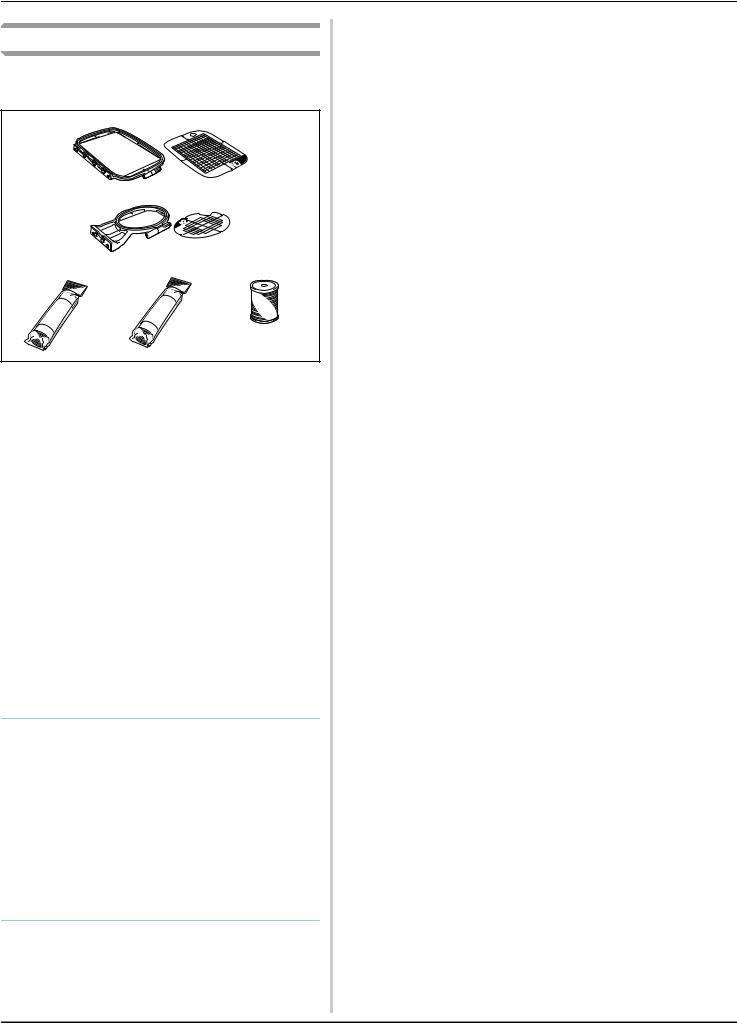
Names of Machine Parts
Optional accessories
The following are available as optional accessories to be purchased separately.
1.
2.
3. |
4. |
5. |
No. |
Part Name |
|
Part Code |
|
|
|
|
||
|
|
Americas |
Europe |
Others |
|
|
|
|
|
1. |
Embroidery frame set |
SA434 |
EF71: |
EF71 |
|
(large)* |
|
XF2410-001 |
EF71CN |
|
17 cm (H) × 10 cm (W) |
|
|
|
|
(6-7/10 inches (H) × 4 |
|
|
|
|
inches (W)) |
|
|
|
|
|
|
|
|
2. |
Embroidery frame set |
SA431 |
EF61: |
EF61 |
|
(small) |
|
XF2419-001 |
EF61CN |
|
2 cm (H) × 6 cm (W) (1 |
|
|
|
|
inch (H) × 2-1/2 inches |
|
|
|
|
(W)) |
|
|
|
|
|
|
|
|
3. |
Stabilizer material for |
SA519 |
BM3: |
BM3 |
|
embroidery |
|
XG6683-001 |
BM3CN |
|
|
|
|
|
4. |
Water soluble |
SA520 |
BM5: |
BM5 |
|
stabilizer |
|
XG6681-001 |
BM5CN |
|
|
|
|
|
5. |
Embroidery bobbin |
EBT-PE |
EBT-PEN: |
EBT-PEN |
|
thread (90 weight) |
|
XC5996-001 |
|
|
|
|
|
|
*By changing the attaching position of the frame, 17 cm × 10 cm (6-7/10 inches × 4 inches) area can be embroidered without hooping the fabric again. The embroidery area is 10 cm × 10 cm (4 inches × 4 inches).
 Memo
Memo
•To obtain optional accessories or parts, contact your authorized Brother dealer or visit our site http:// s.brother/cpjae.
•All specifications are correct at the time of printing. Please be aware that some specifications may change without notice.
•Visit your nearest authorized Brother dealer or our site http://s.brother/cpjae for a complete listing of optional accessories available for your machine.
•Always use accessories recommended for this machine.
8

Turning the Machine On/Off
Turning the Machine On/Off
 WARNING
WARNING
•Use only regular household electricity for the power source. Using other power sources may result in fire, electric shock, or damage to the machine.
•Make sure that the plugs on the power cord are firmly inserted into the electrical outlet and the power cord receptacle on the machine. Otherwise, a fire or electric shock may result.
•Do not insert the plug on the power cord into an electrical outlet that is in poor condition.
•Turn the main power to OFF and remove the plug in the following circumstances:
•When you are away from the machine
•After using the machine
•When the power fails during use
•When the machine does not operate correctly due to a bad connection or a disconnection
•During electrical storms
 CAUTION
CAUTION
•Use only the power cord included with this machine.
•Do not use extension cords or multi-plug adapters with any other appliances plugged into them. Fire or electric shock may result.
•Do not touch the plug with wet hands. Electric shock may result.
•When unplugging the machine, always turn the main power to OFF first. Always grasp the plug to remove it from the electrical outlet. Pulling on the cord may damage the cord, or lead to fire or electric shock.
•Do not allow the power cord to be cut, damaged, modified, forcefully bent, pulled, twisted, or bundled. Do not place heavy objects on the cord. Do not subject the cord to heat. These things may damage the cord, or cause fire or electric shock. If the cord or plug is damaged, take the machine to your authorized Brother dealer for repairs before continuing use.
•Unplug the power cord if the machine is not to be used for a long period of time. Otherwise, a fire may result.
•(For U.S.A. only)
This appliance has a polarized plug (one blade wider than the other). To reduce the risk of electrical shock, this plug is intended to fit in a polarized electrical outlet only one way.
If the plug does not fit fully in the electrical outlet, reverse the plug. If it still does not fit, contact a qualified electrician to install the proper electrical outlet. Do not modify the plug in any way.
aMake sure that the machine is turned off (the main power switch is set to “  ”), and then plug the power cord into the power supply jack on the right side of the machine.
”), and then plug the power cord into the power supply jack on the right side of the machine.
bInsert the plug of the power cord into a household electrical outlet.
2 |
1 |
1 Power supply jack
2 Main power switch
cPress the right side of the main power switch on the right side of the machine to turn the machine on (set it to “I”).
The light, LCD and the “Start/Stop” button light up when the machine is turned on. The machine will make a sound. This is not a malfunction.
dWhen the machine is turned on, the opening movie is played. Press anywhere on the screen.
 Note
Note
•When you first turn on the machine, select the language of your choice.
eTo turn off the machine, press the left side of the main power switch (set it to “ ”).
”).
1
READY GETTING
9

LCD Operation
LCD Operation
Settings screen
Press  to change the default machine settings (needle stop
to change the default machine settings (needle stop
position, opening display, etc.). Press  or
or  , after you changed necessary settings.
, after you changed necessary settings.
 Memo
Memo
•You can save the current settings screen image in a
USB flash drive by pressing  when the USB flash drive is inserted into the USB port. The files are saved in a folder labeled “bPocket”.
when the USB flash drive is inserted into the USB port. The files are saved in a folder labeled “bPocket”.
■ Embroidery settings
1
2
3
4
5
6
7
8
9
1 Select the embroidery frame to be used.
2 Select the center mark and grid lines that are displayed.
3When set to [ON], the embroidery pattern can be selected according to the embroidery frame size that you have selected in number 1. (page 25)
4Change the thread color display on the “Embroidery” screen; thread number, color name. (page 28)
5When the thread number [#123] is selected, select from thread brands. (page 28)
6 Change the display units (mm/inch).
7 Press to specify the size of pattern thumbnails.
8Change the color of the background for the embroidery display area.
9Change the color of the background for the thumbnail area.
■ General settings
0 A
A B
B C
C
D
E
F
G
H
I
0Select the needle stop position (the needle position for when the machine is not being operated) to be up or down.
A Select whether to hear the beep operation sound.
BSelect whether to display the opening screen when the machine is turned on.
C Select the display language.
DSelect whether to turn on the light for the needle area and work area.
ESelect the level of the input sensitivity for operation keys. (page 11)
FDisplay the service count which is a reminder to take your machine in for regular servicing. (Contact your authorized Brother dealer for details.)
GDisplay the total number of stitches embroidered on this machine.
HThe [No.] is the internal machine number for your machine.
I Display the program version installed on your machine.
10
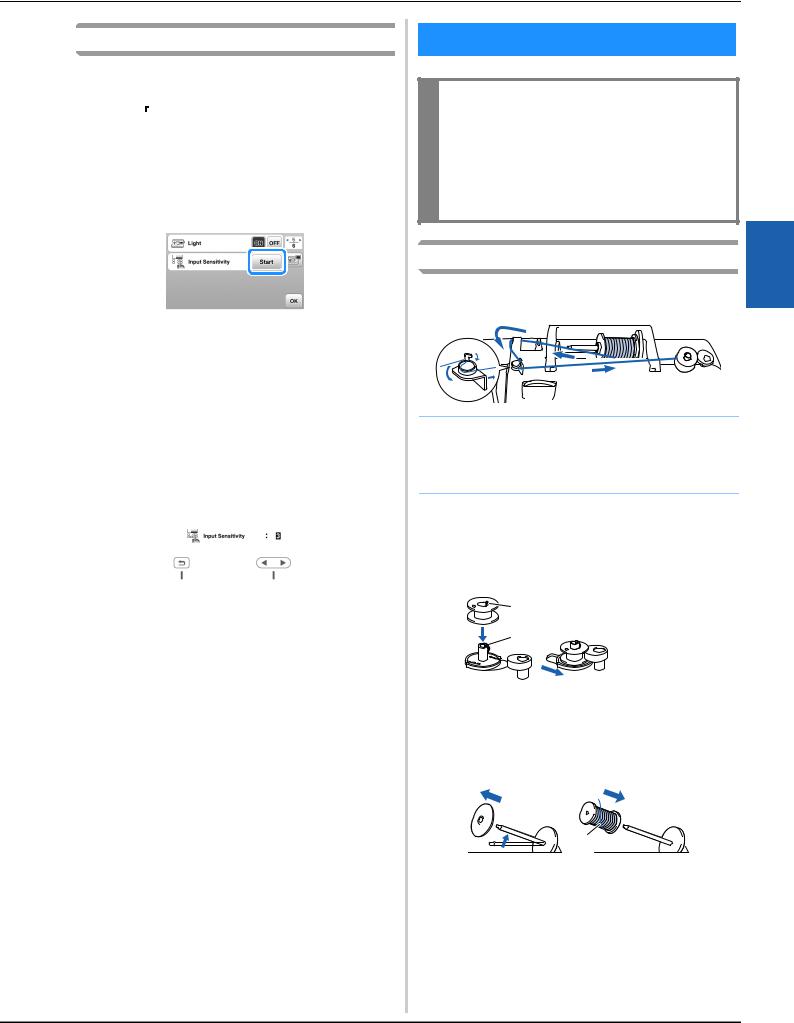
Winding/Installing the Bobbin
Adjusting input sensitivity for operation keys
You can adjust the sensitivity of the operation keys to 5 levels.
Display the settings screen to set desired level.
aPress  to display the settings screen.
to display the settings screen.
bDisplay page 5 by pressing  /
/ .
.
cPress [Start].
The adjusting screen is displayed.
dAdjust the [Input Sensitivity] by pressing  /
/ .
.
•The higher the setting, the more sensitive the keys will be. The default setting is [3].
•We recommend selecting the highest setting if an electrostatic touch pen is being used.
•While adjusting the input sensitivity, press  to check whether the key responds.
to check whether the key responds.
When the key responds, the setting value indicating the sensitivity blinks.
ePress  to return to previous screen.
to return to previous screen.
■If the machine does not respond when an operation key is pressed
Turn machine off, then hold down  (Thread cutter button) and turn on the machine to reset [Input
(Thread cutter button) and turn on the machine to reset [Input
Sensitivity]. Display the settings screen, and then adjust the [Input Sensitivity] again.
Winding/Installing the Bobbin
 CAUTION
CAUTION
•Only use the plastic bobbin that comes with this machine or bobbins of the same type (SA156/SFB: XA5539-151/SFB). The bobbin's height is 11.5 mm (approx. 7/16 inch). Using other bobbins may cause damage to the machine. SA156 is Class 15 type bobbin.
Winding the bobbin
This section describes how to wind thread onto a bobbin.
 Memo
Memo
•When winding bobbin for embroidery, be sure to use the recommended 90 weight embroidery bobbin thread for this machine.
aPlace the bobbin on the bobbin winder shaft so that the notch in the bobbin aligns with the spring on the shaft, and then slide the bobbin winder shaft to the right until it snaps into place.
• The “Start/Stop” button lights up in orange.
|
1 |
Notch |
1 |
2 |
Bobbin winder |
|
|
shaft spring |
2
bRemove the spool cap and place the spool of thread for the bobbin onto the spool pin.
Slide the spool onto the spool pin so that the thread unwinds to the front from the bottom. Otherwise the thread may become tangled around the spool pin.
1
1 The thread unwinds to the front from the bottom.
1
READY GETTING
11

Winding/Installing the Bobbin
cSlide the spool cap onto the spool pin.
Slide the spool cap as far as possible to the right, as shown, with the rounded side on the left.
 CAUTION
CAUTION
•If the spool or the spool cap is not installed correctly, the thread may become tangled around the spool pin, causing the needle to break.
•Three spool cap sizes are available, allowing you to choose a spool cap that best fits the size of spool being used. If the spool cap is too small for the spool being used, the thread may catch on the slit in the spool or the machine may be damaged. When using mini king thread spool, use the thread spool insert (mini king thread spool).
For details on thread spool insert (mini king thread spool), refer to “Memo” on page 12.
 Memo
Memo
•When using the spool as shown below, use the small spool cap, and leave a small space between the cap and the spool.
3 |
2 |
1 |
Spool cap (small) |
|
2 |
Spool (cross-wound |
|||
|
|
|||
|
|
|
thread) |
|
|
|
3 |
Space |
1
•When using thread that winds off quickly, such as metallic thread, place the spool net over the spool before placing the spool of thread onto the spool pin. If the spool net is too long, fold it to fit the size of the spool.
•If a spool of thread whose core is 12 mm (1/2 inch) in diameter and 75 mm (3 inches) high is inserted onto the spool pin, use the thread spool insert (mini king thread spool).
|
|
1 |
Thread spool insert (mini |
|
|
|
king thread spool) |
|
|
2 |
12 mm (1/2 inch) |
1 |
2 |
3 |
75 mm (3 inches) |
|
|
3
dPass the thread under the thread guide, then under the thread guide cover and to the front.
a |
b |
1 Thread guide
2 Thread guide cover
12

Winding/Installing the Bobbin
ePass the thread under the hook on the bobbin winding thread guide, and then wind it counterclockwise under the pretension disk.
1 

 2
2
3
1 Bobbin winding thread guide
2 Pretension disk
3 Pull it in as far as possible
 Note
Note
•Make sure that the thread is passed under the pretension disk.
fWind the thread clockwise around the bobbin 5 or 6 times, pass the thread through the guide slit in the bobbin winder seat, and then pull the thread to cut it.

 a
a
1Guide slit in bobbin winder seat (with built-in cutter)
 Note
Note
•Be sure to wind the thread clockwise around the bobbin, otherwise the thread will become wrapped around the bobbin winder shaft.
 CAUTION
CAUTION
•Be sure to cut the thread as described. If the bobbin is wound without cutting the thread using the cutter built into the guide slit in the bobbin winder seat, the thread may become tangled in the bobbin or the needle may bend or break when the bobbin thread starts to run out.
gTurn on the machine.
hPressbobbin.the “Start/Stop” button once to start winding the
iWhen the bobbin winding becomes slow, press the “Start/Stop” button once to stop the machine.
 CAUTION
CAUTION
•When the bobbin winding becomes slow, stop the machine, otherwise the machine may be damaged.
jCut the thread, slide the bobbin winder shaft to the left until it snaps into place, and then remove the bobbin.
kRemovepin. the spool for the bobbin thread from the spool
Installing the bobbin
Install the bobbin wound with thread.
You can begin embroidering immediately without pulling up the bobbin thread by simply inserting the bobbin in the bobbin case and guiding the thread through the slit in the needle plate cover.
 CAUTION
CAUTION
•Use a bobbin that has been correctly wound with thread, otherwise the needle may break or the thread tension will be incorrect.
•Before inserting or changing the bobbin, be
sure to press  on the operation panel to lock all keys and buttons, otherwise injuries may occur if the “Start/Stop” button or any other button is pressed and the machine starts.
on the operation panel to lock all keys and buttons, otherwise injuries may occur if the “Start/Stop” button or any other button is pressed and the machine starts.
aTurn on the machine.
bPress  (Needle position button) once or twice to raise the needle.
(Needle position button) once or twice to raise the needle.
cPress  .
.
The screen changes, and all keys and operation buttons are locked (except  ).
).
dRaise the presser foot lever.
1
READY GETTING
13
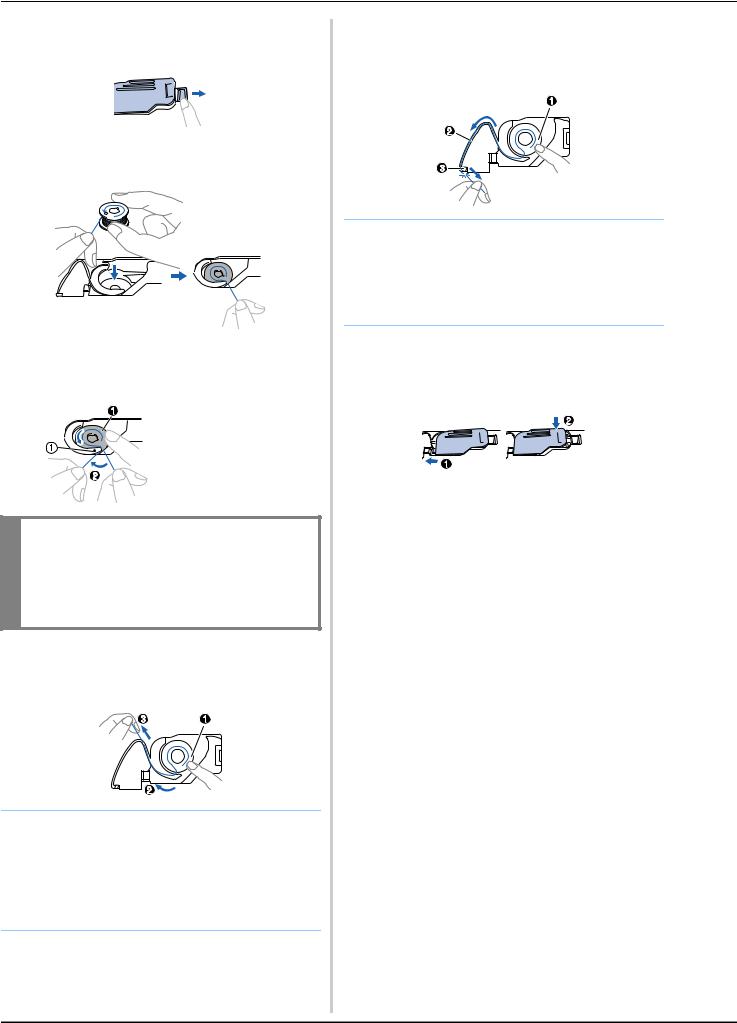
Winding/Installing the Bobbin
eSlide the bobbin cover latch to the right and remove the bobbin cover.
fInsert the bobbin into the bobbin case so that the thread unwinds to the left.
gLightly hold down the bobbin with your right hand (1), and then guide the end of the thread around the tab of the needle plate cover with your left hand (2).
1 Tab
 CAUTION
CAUTION
•Be sure to hold down the bobbin with your finger and unwind the bobbin thread correctly, otherwise the thread may break or the thread tension will be incorrect.
hWhile lightly holding down the bobbin with your right hand (1), guide the thread through the slit in the needle plate cover (2) and lightly pull it with your left hand (3).
 Memo
Memo
•By guiding the thread around the tab of the needle plate cover, passing the thread as shown by 2 in this illustration, then lightly pulling the thread at 3, the thread will enter the tension spring of the bobbin case to apply the appropriate tension to the bobbin thread during embroidering.
iWhile lightly holding down the bobbin with your right hand (1), continue guiding the thread through the slit with your left hand (2). Then, cut the thread with the cutter (3).
 Memo
Memo
•Be sure to complete the bobbin threading correctly according to these instructions. If the thread is simply placed in the slit in the needle plate cover, the bobbin thread will not be correctly threaded, resulting in poor embroidery performance or incorrect thread tension.
jReattach the bobbin cover.
Insert the tab of the bobbin cover into the notch of the needle plate cover, and then lightly press down on the right side.
kPress  to unlock all keys and buttons.
to unlock all keys and buttons.
14
